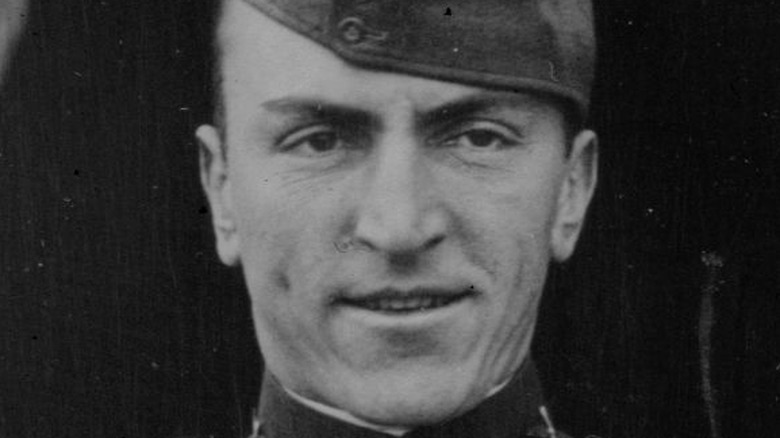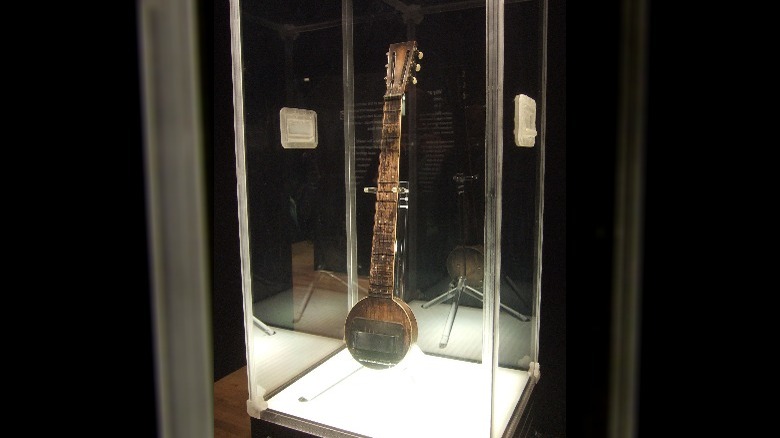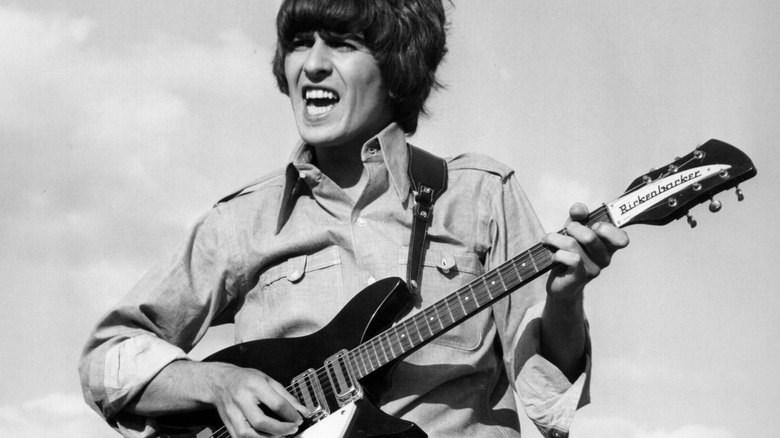A Famous WWI Flying Ace Was The Inspiration Behind The First Electric Guitar's Name
The electric guitar was one of those rare innovations that was designed to solve a problem. Not only did it solve the problem — which had simply been to make guitars louder — it changed the entire face of music. Typically, when people think of the early days of the electric guitar they think of two names: Les Paul and Leo Fender.
Les Paul was a musician who was also a chronic tinkerer who developed advancements in both guitar design and studio recording techniques. According to PBS, Paul was one of the first to experiment with a solid body guitar design, which was less prone to feedback when played at high volumes, which was a major issue with earlier, hollow-body electric guitars. Meanwhile, Leo Fender was a radio repair technician who started by building amplifiers before introducing the first mass-produced solid-body guitar, the Broadcaster, which was later renamed the Telecaster, per the Los Angeles Times. His products made the electric guitar accessible to more players.
However, Paul and Fender weren't the first to experiment with electrifying the guitar. Some of the ideas that they perfected were introduced years earlier by a man named Adolph Rickenbacker. Rickenbacker became a famous name in the electric guitar, but part of the reason for that fame is due to a popular World War I flying ace.
Adolph Rickenbacker and the invention of the electric guitar
Adolph Rickenbacker had been born in Switzerland, but by the 1920s he ran a metal shop in Los Angeles, per Rickenbacker. He eventually met a lap-steel guitar player named George Beauchamp who was on a quest to build louder guitars. Beauchamp had teamed with a violin repairman named John Dopyera, but they needed someone to produce the metal bodies they had designed.
A few years later, Beauchamp and Dopyera had a falling out. Beauchamp was fired from the company they had started together, but he was still on the hunt for a louder guitar. He brought Rickenbacker onboard to help him develop the first electric guitar. According to The Metropolitan Museum of Art, they called it the Frying Pan, because it looked like one, and while it was somewhat rudimentary, it implemented technology that's still used on guitars to this day. Perhaps most important among their innovations was the use of magnetic pickups placed under the strings, which convert the strings' vibrations to electrical energy.
They decided to start a company and sell electric guitars. First, they called it Ro-Pat-In Corporation, but quickly changed it to Electro String. However, the guitars themselves were called Rickenbackers, and not just because Adolph Rickenbacker was the man behind their development and the president of the company that produced them. At the time, that name carried some clout, thanks to Rickenbacker's cousin, famed World War I pilot Eddie Rickenbacker.
Eddie Rickenbacker was part of the reason for a name change
Adolph Rickenbacker had been born Adolph Richenbacher, the Germanic version of his surname. According to "The History of Rickenbacker Guitars" by Richard R. Smith, the brand sold some guitars with the original Germanic version of the name, but by the mid-'30s they switched to the anglicized version. It's thought that this could have been because there was substantial anti-German sentiment after World War I, but the real reason is likely that Rickenbacker was a famous name and good for marketing.
Eddie Rickenbacker was Adolph Rickebacker's cousin. During World War I he was one of the United States' most decorated pilots. He finished his wartime campaign with a staggering 26 confirmed victories, which were more than enough to have him known as the Ace of Aces when he returned to the United States in 1919. In 1930 he was awarded the Congressional medal of honor, according to Auburn University Special Collections and Archives.
In a shrew bit of decision making and marketing, Beauchamp and Rickenbacker went with the anglicized version to cash in on its connection to Eddie Rickenbacker, and because it was simply easier for Beauchamp to say (via Rickenbacker). The company was sold in the 1950s and Rickenbacker guitars evolved over the years until by the 1960s they found themselves in the Beatles' guitar arsenal. John Lennon was especially fond of them and believed to have owned as many as four of them, but Paul McCartney and George Harrison also used them from time to time.


